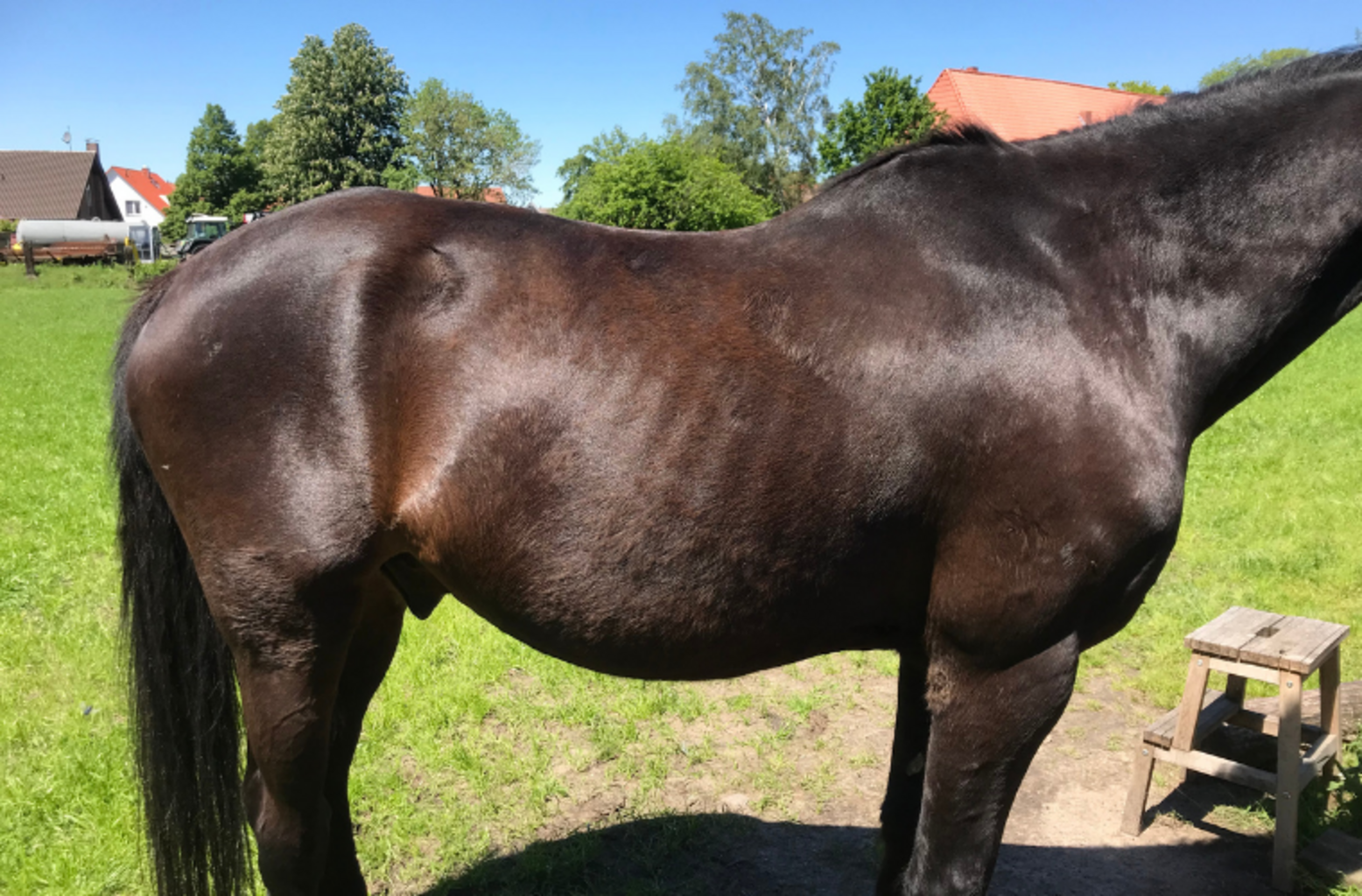It itches! Does my horse have sweet itch?!
By Amelie Kokorsky
Spring is here and for many horses and horse owners that means that the itching will start again.
Everyone who has a horse recognises that sinking feeling when you enter the paddock in the morning and see new hair lying on the ground, stuck on the fence or other places where your four-legged friends have rubbed against to their heart's content. The mane gets thinner and thinner, the tail fur falls out, but the horse just doesn't stop scratching! So the fight against itching starts again.
My horse, a 5-year-old PRE gelding, had also started pulling on his tail and mane at the beginning of May this year and rubbing himself against whatever he could find.
I chose to feed him Stiefel Diatomite. Diatomite is diatomaceous earth that contains zinc - important in many metabolic processes in a horse's body. During the change of coat there is an increased need for zinc. A horse cannot store the trace element in its body, so regular supplementary feeding is important. Diatomite also contains valuable silicon, which, if deficient, can lead to itching and changes in the skin, among other things. To compensate for a lack of silicon and zinc during the coat change, I gave my horse Diatomite every day.
Since the old, dull winter coat of my horse just wouldn't go away, I decided to help by supplementing his feed with Stiefel Linseed Oil. Due to the high content of unsaturated fatty acids, Stiefel linseed oil keeps the skin supple and loose and ensures a shiny summer coat, as we all want it to be on warm summer days. In addition, linseed oil is a great source of energy, as fats provide about twice as much energy as carbohydrates. That was just right for my horse because he was stressed by the change of coat anyway and looked a little tired and thin.
When feeding oil of any kind, I always pay attention to the amount. Horses are not designed for metabolising fat and can only utilise small amounts of fat, i.e. oil. In order to prevent metabolic diseases and not harm the intestinal flora, I like to feed small portions and preferably several times a day. I consider feeding oil to be optimal before going out to pasture or before eating hay. The oil can mix with other food substances in the horse's stomach and is thus digested much better and does not damage the naturally existing watery environment in the stomach.
I applied Stiefel Eczem Protect to the chafed areas on the tail and mane. It contains herbs such as carnation and lavender that have a calming effect on the skin and relieve itching. Juniper and lavender also have an antiseptic effect and can prevent germs from entering. Eczem Protect returns moisture to the damaged areas of the skin and can thus alleviate the intense itching.
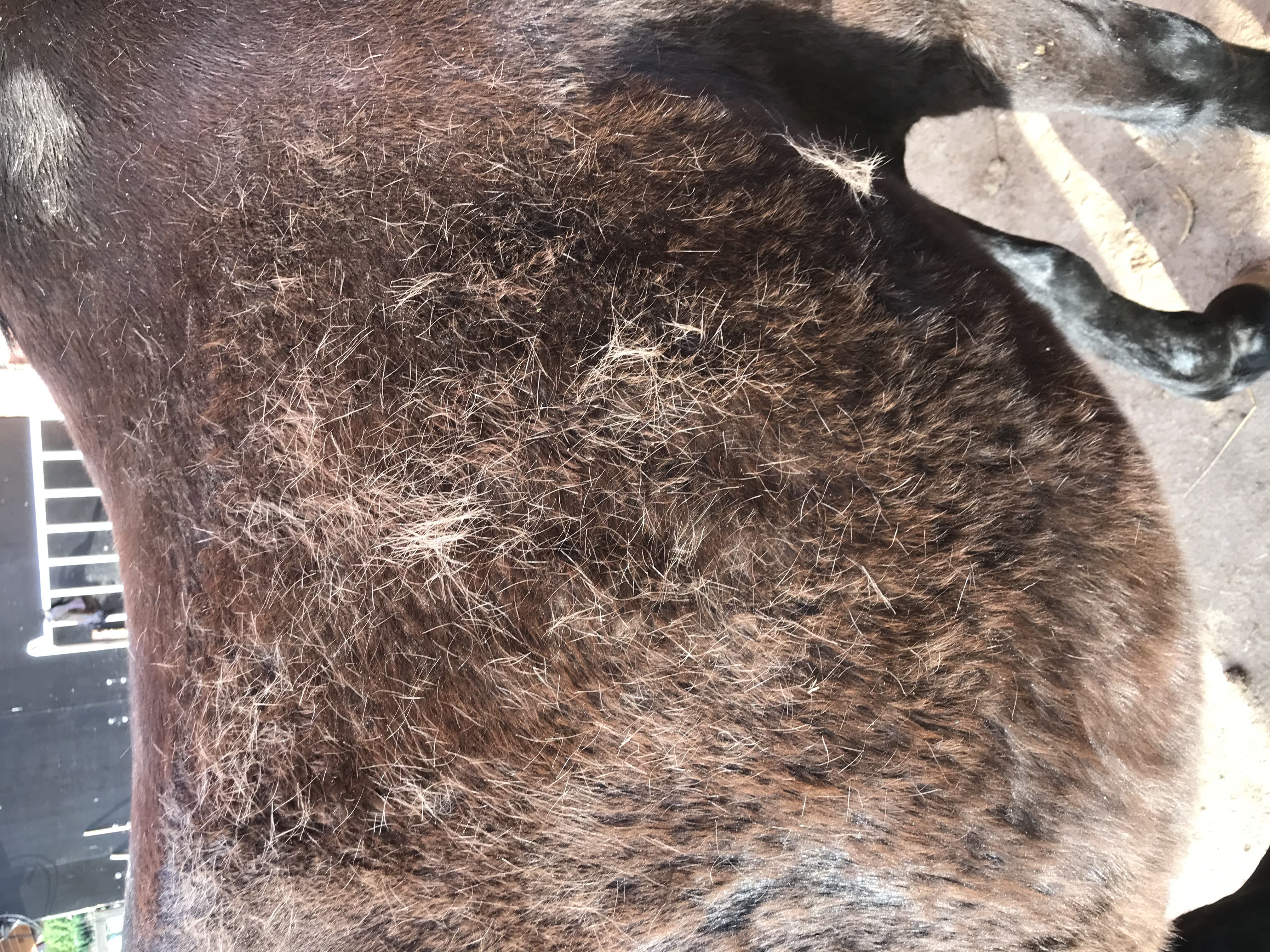
My experience with the products
I always look forward to summer and the shiny coat of my horses gleaming in the summer sun. Stiefel Linseed Oil gives my horses a much better coat - it's smoother, softer and much shinier.
A product that I always stock nowadays: Stiefel Linseed Oil. My little Spanish horse is currently getting 30ml per day tipped over his oats. I divide it into two small portions because the body can absorb the oil even better this way
After a few weeks, my horse had lost almost all its remaining winter coat and its new summer coat was really impressive.
With Stiefel Diatomite, I was a bit sceptical at first whether my horse would eat it, as he can be really picky and is reluctant to eat new feed. But I can say with pleasure that after the third day he ate it without any problems. Each grain was eaten up in a few minutes. He usually got Stiefel Diatomite with his oats in the evenings. His dry, flaky skin improved significantly after 2 weeks and his metabolism was also more active. After only 14 days he shed his winter fur and I could hardly keep up with cleaning.
I applied Stiefel Eczem Protect on his itchy skin twice a day. It's amazing how quickly it helped! I used it on areas on the mane and tail and I can say that from then on he completely stopped chafing himself. The dry crusts on the wounds were able to heal in peace without him constantly scratching them. Personally, I also love the smell of the Stiefel Eczem Protect - it smells so fresh and natural. I am impressed!
To summarise my fight against itching, I can only say: my horse and I have definitely won the fight. And much faster and more sustainably than I expected. My fear of the next coat change and the itching associated with it is history.
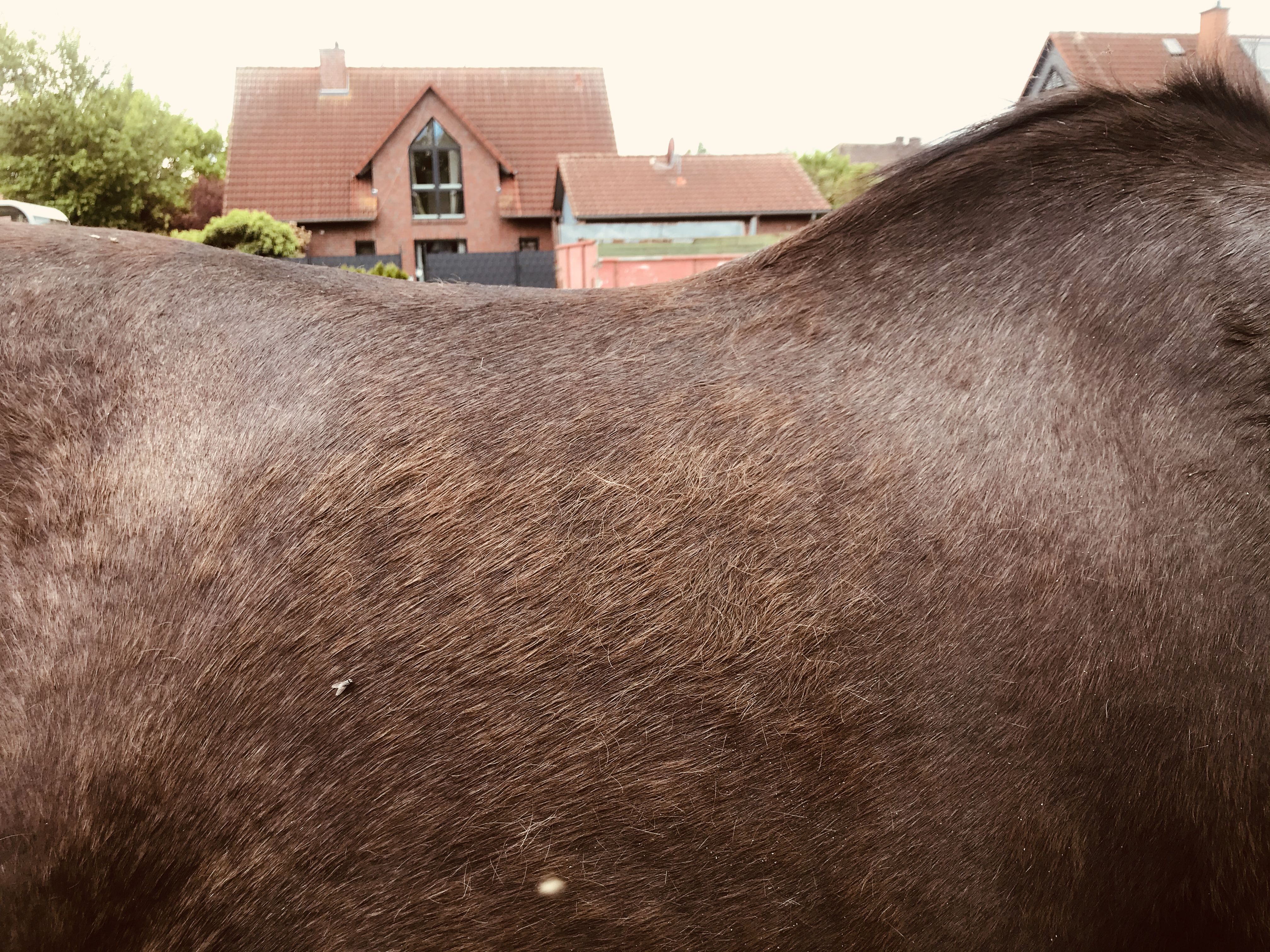
But is every itch on the tail and mane a “sweet itch”?
No. There are major differences and not every horse that itches suffers from sweet itch.
The case I described above is "regular" itching due to dry skin and the stress of changing fur. In such a situation, you can help your horse by using the methods described above and get the itching under control relatively quickly.
There are often several causes for sweet itch. One of the main causes is incorrect husbandry and feeding. Baroque horses, robust horses and other easy-to-feed breeds such as Shettys are particularly affected by sweet itch. These breeds do not tolerate feeds that are high in sugar and pectin such as carrots, beet pulp, bread, sugar cubes and apples. Due to the high sugar content in the food, the horses sweat out butyric acid on warm days. Butyric acid attracts small insects and mosquitoes. Many horses have an allergic reaction to the mosquito's saliva after being bitten and begin to itch severely. Feeding ensiled forage, such as haylage or giving large amounts of concentrated feed, also promotes summer eczema, because digestion is disturbed. Chronic intestinal mucosal inflammation can occur. The attacked tissue releases more histamine, which can possibly lead to allergic reactions on the skin.
The horses then experience severe itching, beginning on the tail and mane, which later spreads to the stomach, ears, neck and face. The affected areas can be chafed so much that no hair or skin can be seen. The result is often hard, scaly patches with thick, dry skin that keeps tearing open. The stress on the horse's mental wellbeing should not be underestimated either, because they are exposed to constant, long-lasting stress. Many owners observe that the eczema gets better over winter or even heals completely. However, this does not mean that the affected horses do not need help over the summer. Quite the opposite - sweet itch, like any other itch, should be treated holistically as quickly as possible because of the high physical and psychological stress.
The treatment for sweet itch is quite different from "regular" itching because the causes are completely different. It is important to first establish the cause of itching.
So don't worry, not every itch will turn out to be sweet itch. With good husbandry and optimal feeding, it is mostly "just" itching that, in my experience, can be relieved very quickly with the appropriate treatment.
“The faster you treat it, the better the outcome will be.” ☺
However, if the horse seems to suffer too much from eczema and/or itching, a veterinarian should be consulted.
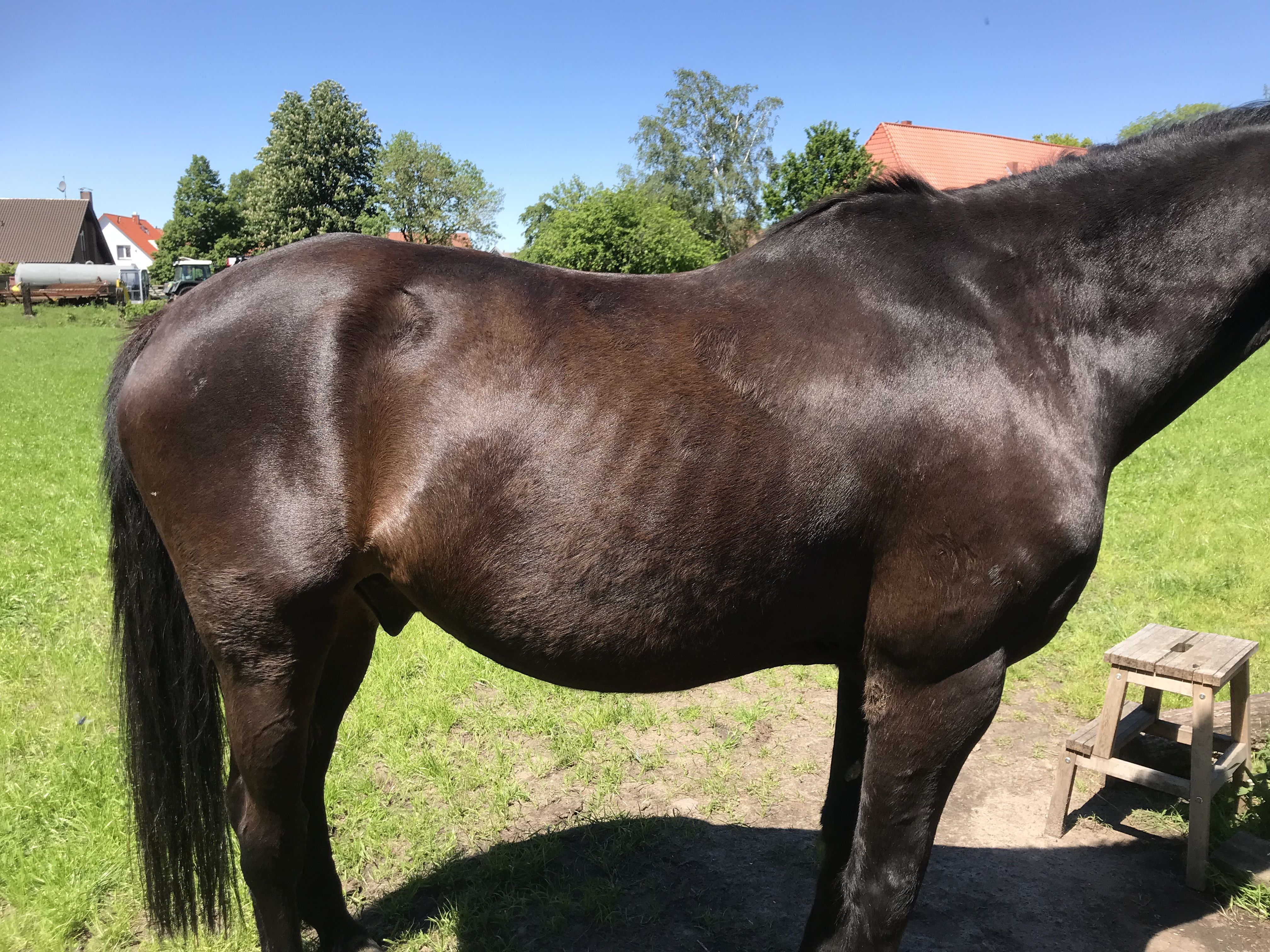
Latest reviews
-
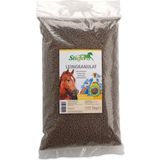 5.0 (7)
5.0 (7)Stiefel Linseed Granules, 5 kg
- Ready-to-feed linseed cake
- High mucilage content
- Reduced fat content due to cold pressing
£17.80 (£3.56 / kg)Delivery by January 22
-
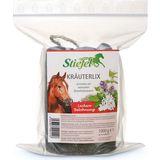 4.8 (10)
4.8 (10)Stiefel Kräuterlix Horse Lick, 1 kg
- Lick stone with bronchial herbs
- A tasty reward
- With attached cord to tie it up
£13.33 (£13.33 / kg)Delivery by January 27
-
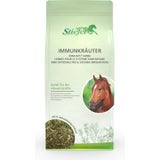 5.0 (8)
5.0 (8)Stiefel Immunity Herbs , 1 kg
New!- 100% natural herbal mixture
- Immunity herbs
- Good for the body's defences
£22.27 (£22.27 / kg)Delivery by January 16
-
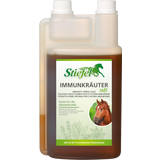 4.8 (6)
4.8 (6)Stiefel Immunity Herbal Liquid, 1 l
Bestseller- To support the immune system
- Made of 100% natural herbs
- No added sugar
£15.12 (£15.12 / l)Delivery by January 16
-
Great Britain: Free standard delivery from £79.90
-
Free
returns Secure payments
with SSL encryption technology

